25 fascinating facts about Rome you may not know
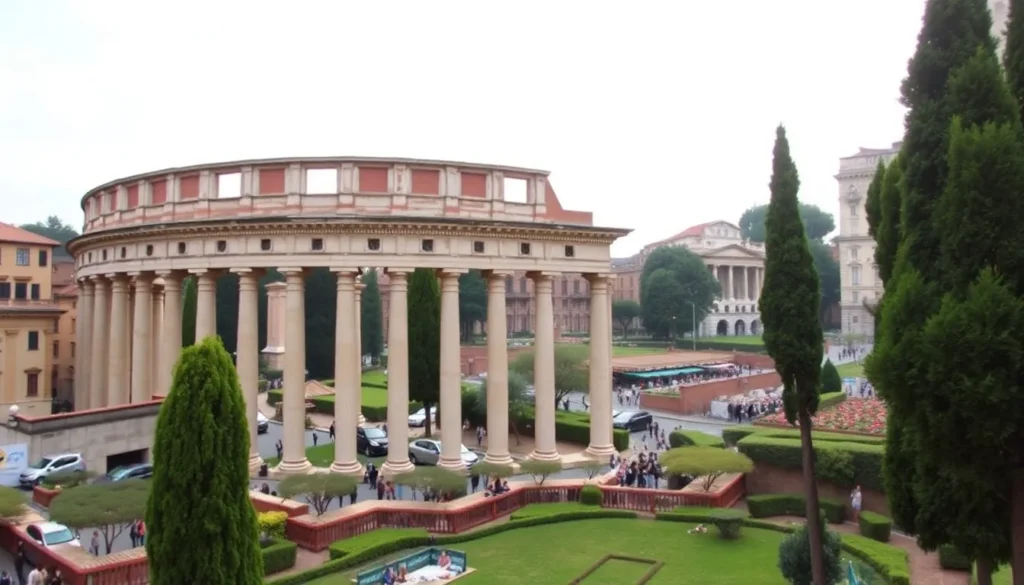
- Unveiling the Colosseum: A Marvel of Engineering
- The Seven Hills: Rome's Unique Geography
- Roman Hygiene: Unconventional Practices
- Naumachia: Spectacles of Naval Battles
- Giordano Bruno: A Martyr for Knowledge
- The Vatican: The Smallest Sovereign State
- Ancient Fire Safety: A Unique Approach
- Italy’s Capital History: A Shift through Time
- A Taste of Ancient Rome: Conditum Paradoxum
- The Swiss Guard: Tradition and Colors
- Superstitions: Numbers and Omens in Rome
- The Origin of the Term 'Candidate'
- Rome's Egyptian Influence: The Pyramid of Cestius
- Life Expectancy in Ancient Rome
- The Pantheon: Marvels of Ancient Architecture
- More Fascinating Facts about Rome
Rome is not just a city; it's a living testament to history, culture, and innovation. Every corner tells a story, and every visit reveals something new that captivates the heart and mind. Whether you're a first-time visitor or someone who has explored its ancient streets multiple times, you'll find that Rome has layers upon layers of fascinating details waiting to be uncovered. Join us as we delve into 25 intriguing facts about Rome that might surprise you, including some remarkable facts about modern Rome that reflect its vibrant present.
Unveiling the Colosseum: A Marvel of Engineering
The Colosseum, a symbol of Rome, stands as one of the most remarkable architectural achievements of the ancient world. If it were built today, it would cost over €380 million. Its original name, the "Flavian Amphitheatre," pays homage to the Flavian dynasty. The colloquial name arises from the massive statue of Nero, known as the "Colossus of Nero," which once stood nearby. This iconic landmark remains a central attraction in Rome, blending ancient history with modern tourism.
The Seven Hills: Rome's Unique Geography
Rome is famously built on seven hills: Aventine, Capitolino, Celio, Esquino, Palatino, Quirinal, and Viminal. This geographical quirk has inspired similar claims from cities like Istanbul and Lisbon. The idea of cities rising on seven hills is deeply rooted in history, symbolizing strength and resilience. Today, these hills offer stunning views of modern Rome, juxtaposing ancient ruins with contemporary life.
Roman Hygiene: Unconventional Practices
In the quest for beauty and cleanliness, ancient Romans had some peculiar habits. They used urine as a cleaning agent due to its ammonia content, and it was even employed as a teeth whitener. The importance of personal grooming led to the emergence of the profession of barber, with figures like Emperor Hadrian never leaving home without a well-groomed appearance, often donning a wig. These historical practices might seem odd today, but they provide insight into the foundations of modern Roman hygiene.
While gladiatorial games were famous, ancient Romans also enjoyed Naumachiae, grand spectacles that simulated naval battles. These events required flooding large areas, including parts of the Colosseum. Historical records suggest that such performances captivated audiences, merging entertainment with elements of drama and spectacle. Even in modern Rome, the spirit of entertainment continues to thrive with various cultural events that draw on this rich history.
Giordano Bruno: A Martyr for Knowledge
The bustling Campo de' Fiori, now a vibrant market square, has a dark past as the site of public executions. The philosopher Giordano Bruno was executed here in 1600 for his controversial ideas, including the notion that the sun was merely one of many stars. His statue stands in the square today, a symbol of the eternal struggle for intellectual freedom. This blend of history and modern commerce exemplifies the fascinating facts about modern Rome that intertwine with its past.
The Vatican: The Smallest Sovereign State
Perhaps one of the most well-known facts about Rome is that it houses the Vatican City, the smallest independent state in the world, covering just 0.44 km². This tiny enclave is a powerhouse of spiritual significance and cultural heritage, easily traversed within a short walk. The Vatican not only serves as a spiritual center but also influences the modern cultural landscape of Rome.
Ancient Fire Safety: A Unique Approach
In ancient Rome, fire was a constant threat, and the absence of modern firefighting resources led to creative solutions. People would write the words "Arse Verse" (meaning "Away with the fire") outside their doors as a way to ward off potential disasters. This practice reflects the community’s awareness and fear of fire hazards. Today, modern Rome continues to implement safety measures to protect its historical sites while accommodating a bustling urban environment.
Italy’s Capital History: A Shift through Time
It may come as a surprise, but Rome was not always the capital of Italy. Before it, Turin and Florence held the title until 1871. During the Roman Empire, the city was referred to as Caput Mundi, or "capital of the world," a title that underlines its historical significance. Today, modern Rome embodies this heritage while evolving into a contemporary hub of politics and culture.
A Taste of Ancient Rome: Conditum Paradoxum
Among the favorite drinks of ancient Romans was Conditum Paradoxum, made with wine, honey, and spices. While today’s spritz cocktails have taken center stage, the thought of tasting this ancient beverage piques interest in Rome’s culinary legacy. The culinary scene in modern Rome continues to thrive, marrying traditional recipes with innovative techniques that reflect the city’s vibrant gastronomic culture.
The Swiss Guard: Tradition and Colors
The distinctive uniform of the Papal Swiss Guard was designed by the renowned artist Michelangelo. The colors—purple, red, and yellow—reflect the lineage of Pope Julius II. Aspiring guards must meet specific criteria, including being Catholic, aged 19 to 30, and single, emphasizing the unique traditions upheld by this elite group. This blend of history and modern requirements showcases how ancient customs are preserved within the context of today's Rome.
Superstitions: Numbers and Omens in Rome
In Italy, the number 17 is considered unlucky, as its Roman numeral representation (XVII) spells “VIXI,” meaning "I have lived." Conversely, encountering a white horse or a hunchback was seen as a sign of good fortune, showcasing the rich tapestry of beliefs that permeated Roman culture. These superstitions are part of the colorful fabric of modern Roman life, influencing everything from architecture to festivals.
The Origin of the Term 'Candidate'
The term candidate has its roots in the Latin word candidus, meaning white. This referred to the white togas worn by those aspiring for political office, symbolizing purity and integrity in their intentions—something that seems to contrast sharply with modern political landscapes. The evolution of political ideals from ancient Rome to today illustrates the ongoing dialogue between history and contemporary governance in modern Rome.
Rome's Egyptian Influence: The Pyramid of Cestius
Interestingly, Rome is home to an Egyptian-style pyramid. The Pyramid of Cestius, standing at 27 meters tall and adorned with marble, is a testament to the eclectic influences that shaped Roman architecture. It serves as a reminder of the cultural exchanges between Rome and Egypt during the imperial era. Today, this site attracts visitors who are eager to explore the intersections of ancient influences and modern interpretations.
Life Expectancy in Ancient Rome
The harsh realities of life in ancient Rome are evident in the average life expectancy, which ranged between 30 and 35 years. This sobering fact highlights the challenges faced by the populace, including disease, wars, and the rigors of daily life. In contrast, modern Rome boasts a much higher life expectancy, reflecting advancements in healthcare and quality of life.
The Pantheon: Marvels of Ancient Architecture
The Pantheon is one of the best-preserved buildings from ancient Rome, fascinating visitors with its architectural brilliance. The dome, over 2,000 years old, features an oculus that allows light to enter. Contrary to popular belief, rain does indeed filter through this opening, adding to the structure's unique atmosphere. This blend of ancient architecture and modern tourism continues to inspire awe in those who visit.
More Fascinating Facts about Rome
Here are additional intriguing tidbits about the Eternal City:
- The Trevi Fountain collects coins that are donated to charity. Tossing a coin in is said to ensure a return to Rome.
- In ancient times, brides wore white dresses with red veils, a tradition that still influences modern weddings.
- Emperor Caligula famously appointed his horse as a senator, a testament to his eccentric rule.
- Originally, Roman statues were painted in vibrant colors, a fact often overlooked in modern interpretations.
- The oldest public museum in the world, the Capitoline Museums, is located in Rome and is among the most visited globally.
- For Roman soldiers, losing their standard to the enemy was considered the ultimate disgrace.
- Rome boasts over 900 churches, each with its unique charm and history.
- The Piazza del Popolo features twin churches, Santa Maria dei Miracoli and Santa Maria in Montesanto, which are not perfectly identical despite their mirrored appearance.
- When drinking from nasoni (water fountains), don't bend down; instead, plug one spout to create a fountain effect.
- The Spanish Steps derive their name from the nearby Spanish embassy, adding a layer of cultural history to the site.
These curiosities about Rome merely scratch the surface of what this magnificent city has to offer, including fascinating facts about modern Rome that highlight its dynamic cultural scene. Each visit provides an opportunity to uncover more unique stories and experiences. What hidden treasures have you discovered in Rome?
Embark on your adventure in Rome, and let the echoes of history inspire you!
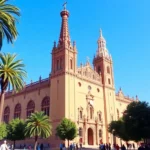

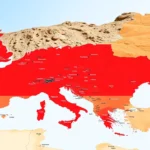
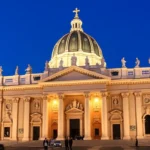
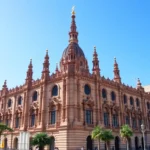
Deja una respuesta